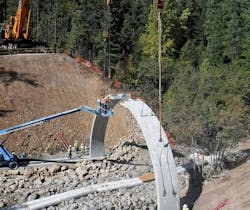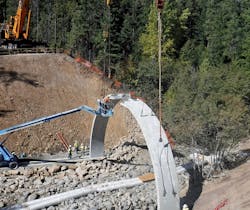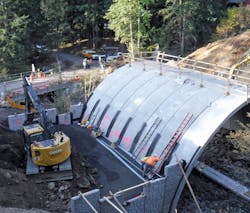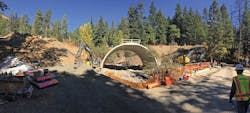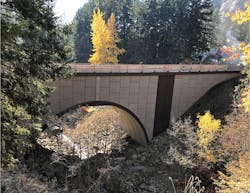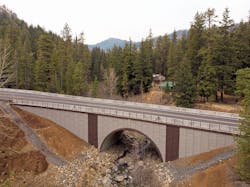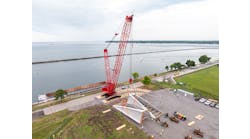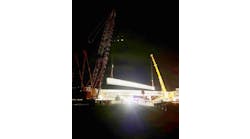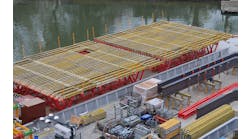By: Richard Patterson
The Cascade Mountain Range runs from Northern California into British Columbia, Canada, dividing the state of Washington in two.
Western Washington is home to the lush greenery and moody skies of Puget Sound, including the surging Seattle metropolitan area—mocha lattes and Microsoft; shipyards and 757s. Beyond that lie Washington’s picturesque coastline and barrier islands.
Eastern Washington’s landscape could not be more different—from high desert hydropower along the Columbia River to the rolling hills of the region’s renowned vineyards. Much drier, the state’s interior enjoys endless days of sunshine. The climates of these two areas are certainly distinct. But Washingtonians on both sides of the divide have many key things in common. Among them, love of the outdoors and appreciation for the Evergreen State’s diverse natural beauty—and a need to get from one side of the state to the other. Because there are only three major routes that cross the Cascades, this can be a challenge, particularly in winter.
U.S. Highway 12 is the southernmost route across the mountains via White Pass. The route connects I-5 to Yakima, the largest city in central Washington. Known also as the White Pass Scenic Byway, U.S. 12 and its adjacent public lands provide access to world-class recreation at Mount Rainer National Park, Mount St. Helens National Volcanic Monument, and the White Pass Ski Area. And, unlike I-90’s Snoqualmie Pass, White Pass rarely closes for heavy snow, which makes the route popular with truckers.
After 80 years in service, Wildcat Creek Bridge, a critical piece of infrastructure on U.S. 12, had begun to show its age. Originally constructed in 1936, the bridge services an average volume of 2,100 vehicles per day. Following repeated repairs, including patching holes as large as 3 ft by 3 ft that penetrated the bridge’s 6-in.-thick deck, the Washington State DOT (WSDOT) prioritized the bridge for replacement by the end of 2018 with a design and construction budget of $12 million. WSDOT’s preliminary design entailed four to five months of construction and required construction of a temporary bridge.
The arch structure eliminates the need for expansion joints and costly associated maintenance. Arch structures are far more durable than traditional girder bridges, providing longevity with low life-cycle costs, and off-site fabrication allows for better quality control and tighter adherence to specifications.
The right solution
WSDOT selected the design-build team of Graham Contracting and Stantec to deliver this high-priority, fast-tracked project, challenging the team to devise a solution to accelerate construction in order to minimize traffic, community, and environmental impacts on this critical route. The team developed an innovative approach to quickly replace the 150-ft span. The new design centered around a 54-ft precast arch culvert structure rather than the standard WSDOT girder bridge.
Fabricated off-site and trucked in, this solution eliminated the need for custom forms and additional cast-in-place elements, including foundations, retaining walls, and traffic barriers—all of which require weeks for concrete to cure on-site. With the precast culvert, the curing time occurred at the fabricator’s plant, before construction began. This allowed demolition of the bridge and installation of the arch structure in just 17 days. What’s more, the new design shaved approximately $4 million off the project’s $12 million budget.
From the beginning, this project focused on minimizing impacts to the public and the environment. To make the most of the time savings allowed by the precast culvert solution, the team decided to forego WSDOT’s planned temporary bridge in favor of a full road closure, eliminating the time and expense of detour bridge construction. To determine just how long the road would need to be closed, the team built a highly detailed, hour-by-hour schedule that penciled out to 17 days of round-the-clock construction.
Although the design required complete closure of U.S. 12, WSDOT and stakeholders, including the trucking association, residents and local businesses, environmental regulatory agencies, U.S. Forest Service, U.S. Bureau of Reclamation, and Yakima County, gladly traded months of construction impacts for this brief closure. The new, 17-day construction window cut inconvenience to the traveling public and residents by 80% and eliminated the safety concerns and expense associated with managing live traffic adjacent to the project.
Benefits aplenty
To further ease the burden, the team worked with Yakima County officials and other stakeholders to develop a detour based on a route that was successfully used on a WSDOT project during the summer of 2017 and familiar to the public.
By drastically reducing the construction timeframe and eliminating the temporary detour bridge structure, the new design also reduced impacts to the environment, including an adjacent spotted owl habitat. Further, off-site fabrication used fewer materials and produced less waste than on-site construction techniques. It also required far fewer trucks to transport the precast arch and other elements than hauling in the materials required to perform cast-in-place construction, reducing the carbon footprint of the project.
In addition, with smaller footings than a conventional bridge, temporary creek bypass time was decreased, reducing settlement, contamination and impacts to Wildcat Creek, and by eliminating the temporary bridge, the team minimized in-water work and spared many of the trees and vegetation slated for removal during construction. The large concrete culvert also continues to provide passage for fish and wildlife in this remote location.
While the immediate economic and environmental benefits of eliminating the detour bridge and shortening construction time are obvious, there also are long-term economic advantages to the precast culvert design. Arch structures are far more durable than traditional girder bridges, providing longevity with low life-cycle costs, and off-site fabrication allows for better quality control and tighter adherence to specifications.
The arch structure eliminates the need for expansion joints and costly associated maintenance. It also eliminates the maintenance of exposed bridge decks and bridge deck deicing due to the continuity of pavement over the buried arch structure. The new Wildcat Creek Bridge will require fewer inspections, significantly reducing operations and maintenance costs over the life of the structure.
The new design for the Wildcat Creek Bridge centered around a 54-ft precast arch culvert structure rather than the standard WSDOT girder bridge. Demolition of the old bridge and installation of the arch structure took just 17 days. The new design shaved off $4 million from the project’s $12 million budget. The new structure adds stability, maintains natural hydrology, and complements local and regional aesthetics.
Sequencing
While Stantec’s design solution was simple and elegant, the logistics of installation in a remote location on a tight time frame were quite complex. Sequencing was perhaps the biggest project risk. It took careful planning to bring all the parts and pieces together in the correct progression—any variation in the progression could have thrown the entire schedule offtrack.
This detailed preparation paid off. U.S. 12 reopened to traffic on Oct. 8, 2018—four hours ahead of schedule and well before the first snowfall, restoring a safe, reliable winter route across the Cascades and meeting WSDOT’s project goals.
“WSDOT is pleased with the results of this bridge replacement project,” said WSDOT Project Engineer Scott Golbek. “This is the first design-build administered project for the South-Central Region. The goals established for this project, including minimizing impacts, collaboration and environmental compliance, have all been successfully met. We look forward to future design-build project partnerships in Washington.”
The project has received praise from stakeholders and the community alike, who have publicly commended the team for installing the new structure quickly and with minimal impacts to traffic and protected species, while improving the aesthetics of the crossing. Kevin McCarthy, general manager of White Pass Ski Area, spoke at the grand opening ceremony for the new bridge, thanking WSDOT and the design-build team for their efforts to maintain a reliable route across the pass.
“The effects of bottlenecks on one of our state’s major transit routes can’t be quantified. That’s the value of functional transportation and infrastructure,” McCarthy said. “In Washington, cross-state travel depends on our mountain passes. I used to say my job is easy—just add snow. But, I’ve come to realize there is one other critical component—access. All the snow in the world doesn’t do me a bit of good if people can’t access the resort.”
The new arch structure adds stability, maintains natural hydrology and fish habitat, and complements local and regional aesthetics. It also brings value to the engineering profession by adding a new tool to the toolbox—a design solution that can be replicated for future projects, including fish barrier replacement projects.
About The Author: Patterson is a senior associate in Stantec’s Bellevue, Wash., office.
